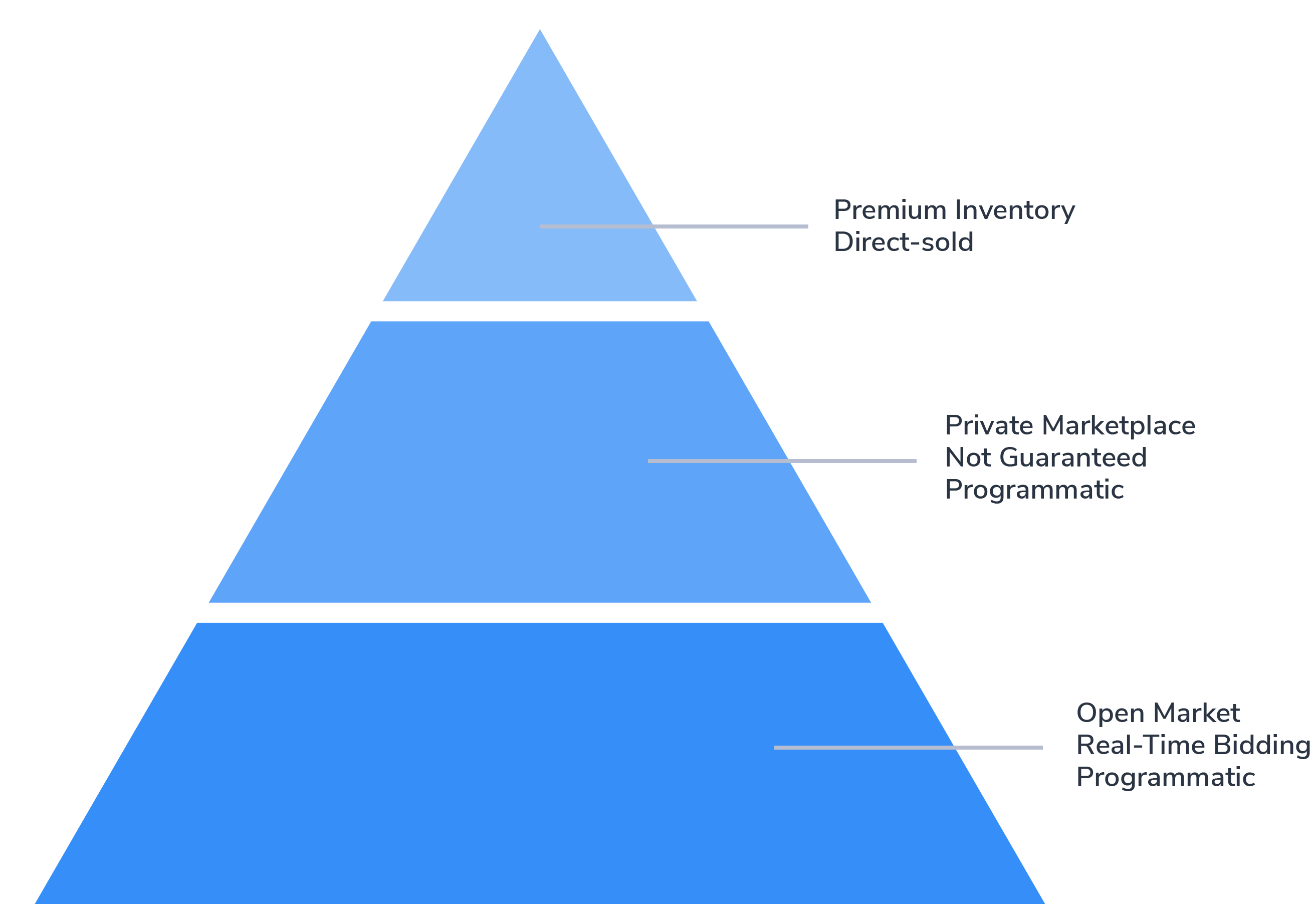Adapt or Die. Chasing the $100B+ Carrot
Successfully delivering all $111B of programmatic- and direct-sold advertising (2018 US expected, eMarketer) and everything in between is the responsibility of advertising operations—but this wasn’t always the case. The digital ad environment has undergone enormous change just in the last 5 years, almost entirely due to the introduction of programmatic advertising. Ad ops teams haven shown great resilience and flexibility in meeting these new challenges and their responsibilities have grown as a reward. Just as in nature, changes in the environment cause change in the inhabitants.
Publishers’ ad ops strategy and approach had to adapt as well to take advantage of the new opportunities to grow revenue that programmatic-sold advertising provides. In this post, we’ll look at a how programmatic advertising has evolved over time and how publishers’ ad ops have adapted their structure and responsibilities to meet those new challenges.
In the beginning, there was a pyramid
Programmatic advertising, automated ad selling and buying, was initially received as a way to monetize remnant inventory within a hierarchical inventory structure, with premium inventory reserved for direct-sold campaigns.

To simplify, programmatic yield management involves setting prices based on market activity and advertiser buying patterns to optimize revenue. This was often handled by just 2-3 “do-it-alls” with very broad skill sets (and possibly a touch of masochism). Within the hierarchical structure, programmatic was treated as an incremental rather than a core source of sales. The focus was on maximizing gains on **each** channel without considering impact to others—this narrow view had the unintended consequence of channel cannibalization hurting overall revenue.
Another fault of early programmatic strategy was task prioritization. Teams were spending too little time on actual revenue-driving activities and too much time on low- to no-value add activities; e.g. administrative assignments were prioritized over building demand, analyzing pricing, and optimizing inventory packages.
Header bidding chases out waterfalls
Heralded as the answer to Google’s DFP (which at the time was the most widely-adopted programmatic inventory delivery mechanism), header bidding saw mainstream adoption in 2015-2016 and replaced Google’s “waterfall” method of daisy-chaining demand sources. The old waterfall method didn’t create a level playing field and thus inventory didn’t go to the highest bidder. Instead, the waterfall prioritized SSPs/exchanges by size (not bid) and strongly preferred Google’s Ad Exchange, AdX, which greatly hindered publishers’ total revenue potential.
Header bidding gave publishers a way to simultaneously auction ad space to all bidders, even allowing the winning bid to compete against a pub’s own direct sales. This gave pubs increased control over who could participate in inventory auctions which provided the opportunity to raise inventory prices—in some cases, resulting in a 30-50% revenue lift.
Ad Ops to the rescue
Header bidding is fairly complicated technology; implementation and maintenance heavily taxed publishers’ development resources. On the reader side, header bidding increased latency, hurting UX, and publishers became susceptible to new kinds of malvertising attacks. Though publishers faced another new set of challenges, the revenue opportunity was too great to pass up, leaving ad ops to deal with the header bidding headache permanently.
Revenue is a two-sided coin
Monetizing inventory requires:
1) access to demand and
2) the ability to keep users engaged.
Poor ad creative brings down quality content and makes a premium publisher’s website look cheap. Redirects and other malvertising attacks usually cause a user to end their session and not return to the site.
Advertising operations’ top priority is revenue; and since a large part of that includes engaging and retaining users, UX management was handed to ad ops. However, despite being the heroes they are, ad ops departments can’t be expected to root out all UX issues on their own. They must rely on their relationships with demand partners for full visibility into a problem. So publishers had to make a strategic decision, based on support and responsiveness, about where to place their demand partners—those that provided the best support would go in the header, others would stay in programmatic waterfall.
Demanding more from demand partners, it’s not just revenue anymore
Maintaining UX standards in the face of growing programmatic complexity requires a more hands-on and communicative relationship with partners to make sure what shows up on a publisher’s page meets expectations. Failure to communicate is a big factor, especially for smaller ad ops teams that don’t have time to chase partners who don’t respond to requests or questions for info or assistance.
Being picky about demand sources is also important for seeing high fill rates. Redundant demand doesn’t help a publisher meet their goals and causes unnecessary complexities in the day-to-day management. Onboarding and testing too many partners dilutes the value of a consolidated market. Though a robust tech stack with a lot of demand partners can increase options for monetization, those revenue efficiencies are quickly eaten up when ad ops teams have to root out problems and uncover which demand partner is responsible.
Demand partners play a huge role in achieving both sides of the revenue coin. Publishers need to consider not only the revenue they receive from their demand partners, but also their partners’ response to any red flags pubs raise. Publishers realized the question of where to put demand partners needed to be escalated to the more serious decision about which partners to keep and which to cut off completely.
What’s next for Ad Ops?
This brings us up to the present day, but the challenge isn’t over. Programmatic still has a lot of maturing to do and, as we’ve alluded to, programmatic doesn’t always play nice with its direct-sold sibling. Today’s advertising operations departments are at varying levels of proficiency and are constantly testing out new structures. Publishers are aware of the enormous opportunities available with the new technology and are making cautious but strategic moves forward. Look for our next post where we’ll cover how to stop channels from cannibalizing each other, how to stop sales teams from infighting, how to get on top of all that programmatic data to truly maximize revenue.






